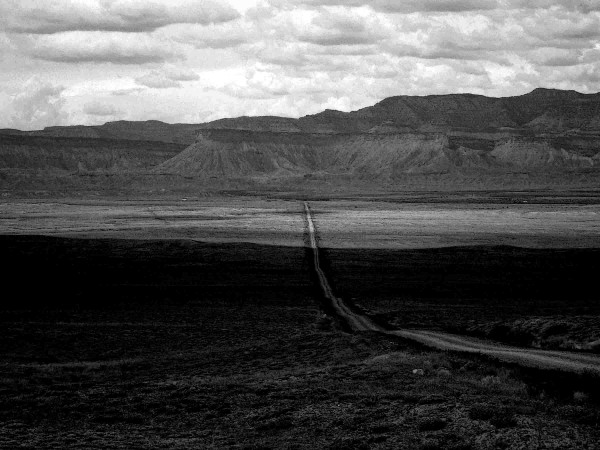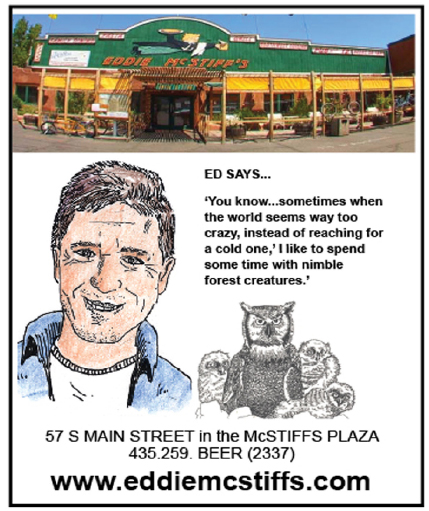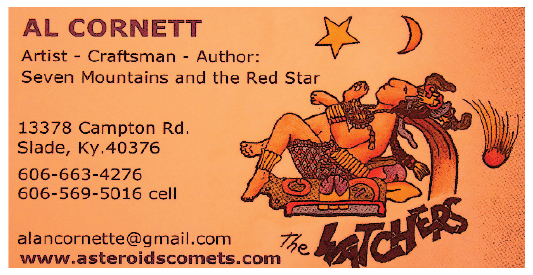Former County Councilman and Allen Memorial Hospital nurse Peter Haney swears that what follows is true…
It was 12:20 am on Thanksgiving Day 1986…I had just finished my midnight rounds at the hospital. I went to an empty patient room and turned on Channel 6 to see the temperature—23 degrees. It’s going to be a cold winter, I thought to myself.
I walked down the corridor to make a fresh pot of coffee; with only two patients who couldn’t go home for the holiday, it had the markings of a quiet night. As the coffee started dripping, the emergency room door creaked open and slammed shut. I walked around the corner to see who it was and saw a woman pushing a wheel chair from the front of the trauma room and heading back out the door. I was right behind her.
The woman’s car was pulled up tight by the ramp and she went to the passenger wide and opened the door. It was cold. I could instantly see my every breath. I walked around behind the wheel chair to steady it as she helped a large man out of the car and into the wheelchair. He had a military uniform on, which was quite disheveled an dirty. His knees were showing through small holes in his pants and his feet were bare, white, blistered and bleeding—the beginnings of frostbite.
I pushed the man up the ramp and through the ER door the woman was holding open for me and into the trauma room, grabbing the ER paper work as we went in. He looked dazed and distant as we helped him up on the stretcher and covered him with two or three blankets. I started to take his vitals, introduced myself and asked his name. He just looked up at me and said nothing while still shaking from the chills.
I looked to the woman for some help. She said she found him wandering along the interstate between Thompson and Crescent Junction on her way back from Grand Junction; in fact, she had almost collided with the uniformed man, had swerved to miss him, and then had to back up to offer assistance.
His pulse was 56, his skin cold. She said he didn’t say a word during the entire drive into town and asked if he was going to be all right. His temperature was 91, indicating mild hypothermia. I covered him with two blankets except for his feet which were pasty white on the soles and blistered red up to the ankles.
The woman asked if she could leave as it was late and she had to get home. I said sure and took her name and number.
The man’s lungs had good breath sounds and he even had slight distant bowel sounds. I looked at his eyes, and though they reacted sluggishly, he could focus on me. I asked him if he wanted a cup of coffee, he nodded yes. It was now 12:45 am. I went to get coffee for the two of us and called Dr. Mayberry. I gave him a report on the patient. He said he would be here soon. I walked down the hall and checked the other patients who were all asleep, and then took our coffee to the ER. He sat up with some help and began sipping his coffee. I asked if I could check his wallet for ID, and he agreed.
The man told me his name and said he was traveling from Florida to Nevada to see family for Thanksgiving. Just then Dr. Mayberry came through the door and proceeded to examine him and clean and dress his feet.
And then we were told the most remarkable story. The man, a Lt. Colonel in the Air Force, told us he had left Grand Junction at dusk and was traveling west on Interstate 70. Just as he came over the hills and saw Thompson’s two gas stations, he felt the truck he was driving leave the road and start to “float away.” He said he was a pilot and knew what it was like to leave the ground and that this was almost like being in a balloon. He remembered floating toward a large black escarpment and then that was it. Nothing.
The next thing he remembered was walking toward the distant lights, cold and dirty, and then the close call with the car on the freeway.
He looked up and Dr. Mayberry smiled and asked him if he had a bit of Old Bushmills to spare. The man swore he had not been drinking and that, as an Air Force pilot, he had not had a drink for two years. He then asked if he could use the phone to call his base in Florida. It was almost 1 am. After a few moments on the phone he asked if we would step out for a bit. Dr. Mayberry admitted him for the night and jotted down some notes. We then went back in the trauma room and the man said he couldn’t talk to us anymore about the incident. Dr. Mayberry said, “Good, then we’ll both get some sleep and I’ll see you in the morning.” And then he left.
I wheeled the gurney with the Air Force Colonel into an empty patient room and he moved himself onto the bed. He then lay back and I checked his vitals again—temperature was up to 94, chills were still strong, a good sign. It was plain to see that physically, at least, he was recovering. But his story…I didn’t know what to think.
The night passed quietly. But at 6:50 am, I heard the ER door creak open and slam again. Two men in uniforms were walking down the hall and approached me just as I completed taping the night report for the next shift. They asked to see the Lt. Colonel and I showed them his room. One of the men came out and got a wheelchair and went back in again. Curious, I walked toward the room to see what they were doing when the two men burst through the door, pushing the patient in the wheel chair. They hurried down the hall, through the Emergency Room, through the swinging doors, and to an unmarked car where a third man waited with the motor running. As I opened the ER door, the last car door slammed shut and they roared out of the parking lot. I went back to his room and discovered that his bedside chart was missing. Everything was missing…except for the admission paperwork, they had removed any sign that the Lost Colonel had ever been here.
About then the day shift began to arrive and I told the crew what had happened. Gloria Harris, came down the hall and I gave her the admission paperwork from the ER that I’d left at the Nurse’s station. She tried the phone number that the Colonel had called the night before but the receiving party claimed there was no one stationed there by that name. Did this man exist?
My co-workers thought I was just bored and playing a game or losing my sanity until Dr. Mayberry came in later that morning. “Where’s my patient?” he asked.
We never found out.
An epilogue…
Recently I spent the day looking at county roads in the Book Cliffs with Dave Warner, the County Road Superintendent. The drive jogged a memory he hadn’t considered in years. He told me of the time in the late Eighties when on the day after Thanksgiving he had seen a Huey military helicopter flying out of the area above Floy Wash. He remembered seeing it come down from high up on the Book Cliffs, close to the Utah State Roadless area. On a cable below it dangled a truck.
I asked him if he had any Old Bushmills to spare and then told him of my night at the hospital on Thanksgiving Day.
This Story First Appeared in the Zephyr in 1996.
To read the PDF version of this article, click here.
To comment, scroll to the bottom of the page.
Don’t forget the Zephyr ads! All links are hot!









This was an awesome story, thanks for sharing it!!